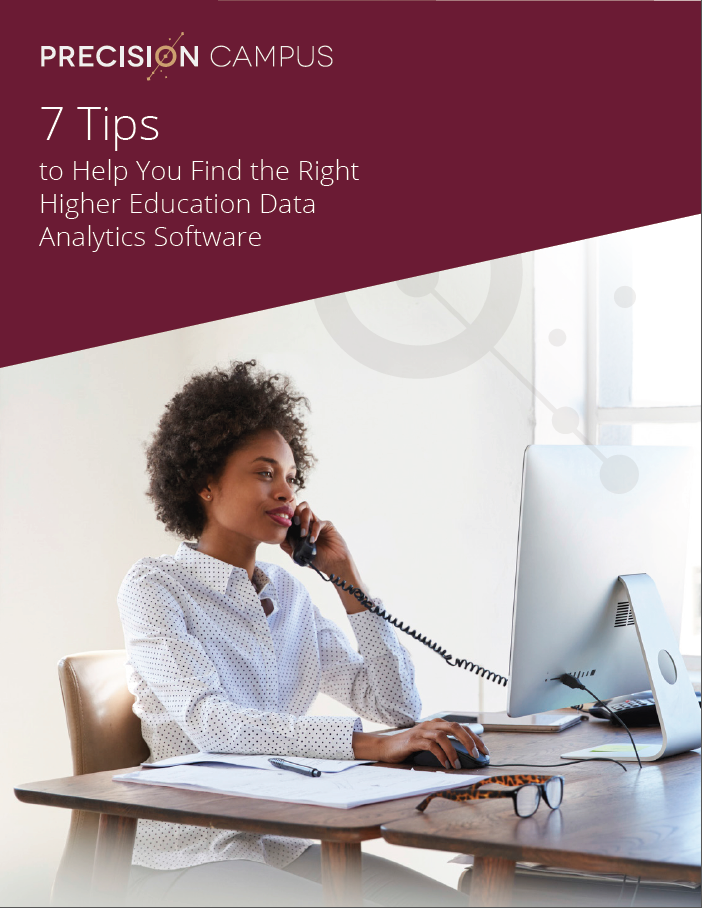As much as administrators want to believe that they know what’s best for their students, it’s difficult to truly understand their needs when you aren’t a student yourself. This is why it can be complicated for institutions to develop a comprehensive strategic plan that prioritizes student success or complete a self-evaluation for the accreditation process without having data to back up their findings and observations.
Data analytics is the best way to see if your strategic plans are actually benefiting your students. Without numbers to back up your strategies, it will be impossible to measure success.
Below, you’ll find examples and details on why data analytics is a fundamental tool for the strategic planning and accreditation process.
Strategic Planning & Accreditation
The goal of accreditation is for an institution to prove that it provides a quality education, making it one of the most important processes in higher education. Without accreditation, it’s difficult (if not impossible) for an institution to receive federal funding or for students to receive tuition assistance. Plus, public opinion about non-accredited colleges and universities is very low compared to accredited institutions*.
As a detailed proposal of how you intend to improve the quality of your institution, your strategic plan can be a great resource when it comes to the accreditation process. The strategic plan — as long as it’s implemented — is essentially proof of institutional progress and success. Including data on demographics, enrollments, student success and other factors will clearly tell accreditors if you’ve followed through on your plan.
Understanding Demographics
Student characteristics like gender, ethnicity, age and income can give you great insight into who is being accepted and who is enrolling in your college or university. From there, you can evaluate whether there are any noticeable trends and use data as a context for improving your recruitment strategies.
Here are a few questions that data can help you answer:
- Will the number of high school graduates in your area experience a decline? Anticipating a decrease in potential enrollments during certain timeframes can help you adjust your expectations.
- Is the average age in your area expected rise? This may affect the demand for certain courses and programs.
- Do the majority of your students qualify as low income? This can tell you that there is likely a need on campus for more education on financial options.
Demographics can also tell you if there are growing gender gaps or if the average age of students is fluctuating.
Tracking Enrollments
Student enrollment trends are a key indicator of your institution’s recruitment and retention success, which can support your future marketing strategies and planning efforts.
These are some ways you can use enrollment data to your advantage:
- Have you seen an increase in enrollments from students outside of your targeted area? You may want to consider adding or increasing outreach strategies.
- Are enrollments in online classes growing? This can tell you that there is a student need for flexible education options that should be part of your strategic plan.
- Are more students enrolling part-time instead of full-time? This can be another example of the need for flexible education options, like online courses or additional course sections.
You can also use data to assess enrollments for specific courses or programs. If German 101 has seen a steady decline over the past few semesters, it might be time to end that course and save your resources. There are likely other in-demand subjects that can take its place.
Measuring Student Success
All of the effort that goes into strategic planning and the accreditation process is for the benefit of your students. If they don’t succeed, then neither will your institution.
Taking a hard look at your data — like course completion rates and drop, withdraw and fail rates — can show you where certain student cohorts may be struggling. From there, you can explore why, and incorporate solutions into your strategic plan. Some areas to evaluate include:
- Do online courses have low success rates? Your strategic plan may need to include ways to help students adjust to your online learning environment or reassess your drop/withdraw rules.
- Are certain cohorts less likely to succeed? Enhancing or implementing student support and engagement groups may be an avenue to explore.
- Are underprepared students less likely to earn a certificate or degree? First-time college students or those who may need additional guidance may benefit from student support services as well.
You can also use your data as proof of success for certain courses and programs, which can support you throughout the daunting accreditation process.
Following Market Expectations
When the economy is thriving, college enrollments tend to decline. Understanding how your college or university is specifically affected by local market trends can help you plan curriculums accordingly and will set your expectations for the coming years.
By diving into the following questions, you can more efficiently allocate your resources and better serve your students:
- Are certain industries on a decline? Many industries like print media and telecommunications are struggling in certain parts of the country, so there is much less of a demand for these programs.
- Are other industries on the rise? If the senior population in your area is expected to increase in the coming years, there may be more of a demand for nursing programs.
You can use enrollment trends, market forecasts and the expertise of your faculty to properly assess how you can better serve your students.
How Institutional Researchers Can Help
Institutional leadership will ultimately determine the extent to which researchers are involved in the strategic planning and accreditation processes. This is because some administrators highly value data as the primary means for decision making while others may not see the benefits.
Whether or not institutional researchers are involved in the planning process, they will be integral when it comes to measuring its success. Since their main responsibilities include data analytics and research, they will be your greatest resource for determining if your institution is on track with the goals outlined in your strategic plan.
Higher education will always be an evolving industry. In order to stay competitive, institutions need a data infrastructure that provides flexibility, accessibility and collaboration.
Precision Campus is fully customizable reporting software exclusively designed for higher education data analytics. You can create a free account here and start putting your data to work!



